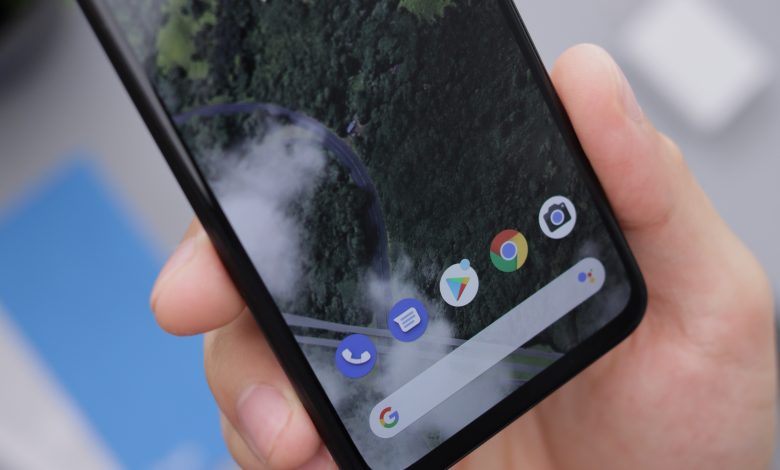Checklist for app store optimization for launching a successful mobile app

Consider the case of a firm that has designed an mobile app it deems perfect. The development team understood the concept, coded it and tested it thoroughly. Now they are close to deploying the app in the marketplace. But there is one thing that is worrisome; a lot of apps fail after being deployed.
The mobile app development industry is a competitive one, and thousands of new apps usually go live daily. There are a lot of apps competing against one another, and launching an app in the market may not be that easy. Moreover, it takes a lot of research and effort to make a successful app and to ensure users discover it.
There is a way for companies to keep their apps successful after launching them. App store optimization strategies should be part of the app’s launch. Being ready ahead of time is among the best ways to start. From a lot of time spent in researching for keywords to stringent creative testing, app optimization does require a lot of work. Yet, it is hard work that has a very good pay off.
Hence, it is time to read a very good checklist for app store optimization, to see how a solid strategy can bring the app to the sights of more users. Now we will check the steps to make app launch and store optimization a smooth process.
App optimizing before the launch
It is necessary to make sure an app is launched successfully. This starts with pre-launch optimization. In both Apple’s App Store and Google’s Play Store, keywords are the important factors driving an app’s visibility and ranking. The app’s overall keyword visibility is able to determine how users can discover the app by organic means.
There are two key resources to help a company use the right keywords for their app. One of them is the App Store Optimization software, while the other are App Store Optimization experts proficient in doing the hard work of such.
App Store Optimization software is able to provide insight in trending keywords, various measurements of keyword search volume, trends in the category and industry, along with other useful tools for optimization and research.
5 Components of a Winning App Store Optimization Strategy
App store optimization (ASO) software and getting ready for launch
No App Store optimization software was created equally. A common misconception is to use Apple’s Search Ads Popularity as a measure of raising keyword volume. Though popularity can give some insights into what a keyword looks like at that time but it is not a viable long term measurement nor does it provide its organic ranking.
Instead, app development companies should look for ASO software providing insights into mobile data trends instead of making attempts to change the purpose of ASA popularity or changing web data.
Such a software can help companies get the best initiation point for their research in helping the app get discovered. If companies start on the wrong footing, they won’t be able to rise up properly.
Other than that, it is also important to understand what kind of creatives will be helpful in driving conversions.
Web Optimization Tips for Mobile App Development
Monitoring Key Performance Indicators after the launch
After companies have researched the competitive landscape, they must choose the best keywords to represent their app. Creatives should be optimized too, so they can be compelling, appealing and informative. Once all these are set, it is hence time to launch the app.
Launching the app sure helps a lot see their hard work pay off, but it does not mean it is over yet. Experts from the industry of app development Toronto reveal that the post-launch period is a crucial time for learning which factors improve visibility and conversion. Moreover, there are a few key performance indicators to monitor.
How to make your mobile application a successful one?
Methods of Indexing
It is hence important to let the app store’s algorithm completely index the app before any further changes are made. The indexation process can take almost a month on Apple’s App Store and approximately 45 days on Google’s Play Store.
Apple’s backend keyword bank simplifies the indexing process on the App Store whereas Google Play Store has no such thing. Instead Google’s algorithm must crawl the app’s title, short description and full description to index the terms included here.
It also depends on the app how long it will take to get indexed. Newer apps will take longer. An app having a lot of traffic will be indexed quickly. Paid traffic in this manner can be a great way to kickstart this process.
Advantages of Mobile MI Store in UAE
Alpha/Beta Testing
Now is the time to do some Alpha/Beta (A/B) testing on the assets on the store’s listing as well as the product’s page. While this can be done with ease in Google’s Play Store Listing Experiments, Apple does not have any A/B testing capabilities in the App Store.
For iOS apps, what is needed is either turn to a third-party testing platform or measure changes in the performance before and after launching new graphics. But developers should be wary of third party tools, as they can cause a lot more damage than good.
The process of refreshing metadata and testing changes in creatives should be done regularly to maintain the app’s optimum performance level in the app stores. A rule of thumb is refreshing the app’s metadata after every 30-45 days to prevent stagnation and test changes to creatives on a similar timeline.
Depending on the daily traffic flow of the app, developers might be able to run tests at a quicker pace.
It is also important to limit the number of changes conducted at one time, as this will cause developers to lose track of what impacted conversion the most.
Limiting variables that are A/B tested works. It helps provide developers workable insights for app store optimization of an app.
10 of the Best Shopify WordPress Plugins for a Successful Online Store in 2022
Paid marketing activities – instrumental in driving downloads
Paid marketing campaigns are helpful in driving more downloads. They can also help add effort to organic optimization strategies. Also, effective app store optimization can benefit the paid campaigns by reducing the cost per impression (CPI).
Digital marketers must plan their campaigns with precision and strategy to get the most benefit from both organic and paid marketing. They should work together to raise the app’s listing and for listing organic coefficients. In turn, this brings long-lasting improvements in performance as compared to what they would get with a poorly planned effort (hire app developer).
Capitalizing on seasonal trends is also helpful. There are certain categories of apps that can become quite popular during seasons like Holidays, Thanksgiving, Easter, Summer Holidays and the like. Moreover, optimizing the app’s keywords and creatives for seasonality can bring in a lot of traffic, raising visibility even after the holiday season.
Localization is a must
Translating an app is simply not enough. It would be wise to localize the app for additional regions and countries. This can open up new markets with millions of users that can use the app. Investing in a team that can localize effectively with the right knowledge of the local keywords helps in this matter.
Consider the case of an app made in England and now it wishes to go across Europe. The app is a memes generator. There are users in the Netherlands meaning it must be understood by the Dutch with ease.




